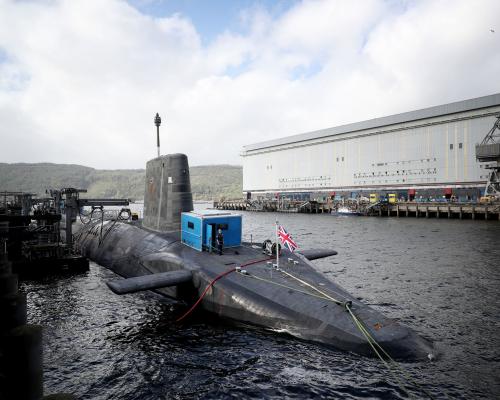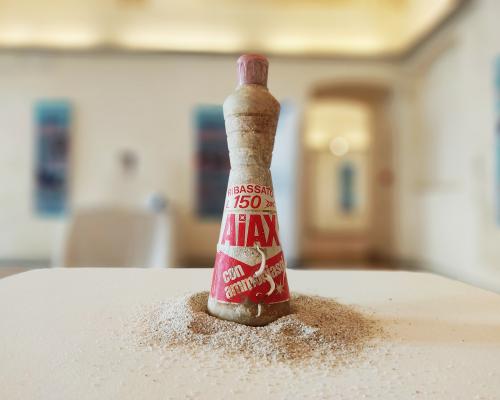
Radioactive water from the base that holds the UK’s nuclear bombs was allowed to leak into the sea after old pipes repeatedly burst, official files have revealed.
The radioactive material was released into Loch Long, a sea loch near Glasgow in western Scotland, because the Royal Navy failed to properly maintain a network of 1,500 water pipes on the base, a regulator found.
The armaments depot at Coulport on Loch Long is one of the most secure and secretive military sites in the UK. It holds the Royal Navy’s supply of nuclear warheads for its fleet of four Trident submarines, which are based nearby.
Files compiled by the Scottish Environment Protection Agency (Sepa), a government pollution watchdog, suggest that up to half the components at the base were beyond their design life when the leaks occurred.
Sepa said the flooding at Coulport was caused by “shortfalls in maintenance”, resulting in the release of “unnecessary radioactive waste” in the form of low levels of tritium, which is used in nuclear warheads.
In one report in 2022, the agency blamed the leaks on the navy’s repeated failure to maintain the equipment in the area devoted to storing the warheads, and said plans to replace 1,500 old pipes at risk of bursting were “sub-optimal”.
The leaks are revealed in a cache of confidential inspection reports and emails given to the investigative website the Ferret and shared with the Guardian, which Sepa and the Ministry of Defence fought to keep secret.
They were released on the orders of David Hamilton, the Scottish information commissioner, who polices Scotland’s freedom of information laws, after a six-year long battle by reporters for access to the files.
The UK government insisted the files had to be kept secret for national security reasons, but in June Hamilton ruled that most had to be released. He said their disclosure threatened “reputations” not national security.
They were released in August following a further delay after the MoD asked for more time to review them, citing “additional national security considerations”.
Nuclear warheads are fitted on to the UK’s supply of Trident missiles at Coulport where the missiles are loaded on to Vanguard class submarines before they head to sea for secret patrols as part of the UK’s nuclear deterrent.
The UK’s nuclear weapons fleet has been based at Faslane on a neighbouring loch called Gare Loch since the early 1960s. Tritium is regularly replenished in the warheads to maintain the performance of the weapons.
The Sepa files show there had been a pipe burst at Coulport in 2010 and a further two in 2019. One leak in August 2019 released “significant amounts of water” that flooded a nuclear weapons processing area, where it became contaminated with low levels of tritium and passed through an open drain that fed into Loch Long.
While Sepa said radioactivity levels in that incident were very low and did not endanger human health, it found there were “shortfalls in maintenance and asset management that led to the failure of the coupling that indirectly led to the production of unnecessary radioactive waste”.
After an internal investigation and a Sepa inspection, the MoD promised 23 actions to prevent more bursts and floods in March 2020. It accepted that its lack of preparedness had caused “confusion”, “a breakdown in access control” and a “lack of communication of the hazards”.
However, there were two further pipe bursts in 2021, including one in another area that also held radioactive substances, prompting another inspection by Sepa in 2022. Progress on completing the 23 remedial actions “had been slow and delayed in many cases”, Sepa said. “The events have highlighted shortcomings in asset management across the naval base.”
David Cullen, a nuclear weapons expert with the defence thinktank Basic in London, said the repeated pollution incidents were shocking and the attempts to keep them secret were “outrageous”.
He said: “The MoD is almost 10 years into a nearly £2bn infrastructure programme at Faslane and Coulport, and yet they apparently didn’t have a proper asset management system as recently as 2022. This negligent approach is far too common in the nuclear weapons programme, and is a direct consequence of a lack of oversight.”
Coulport is exempt from civilian pollution controls because it is a military base, but Sepa said it was committed to ensuring the base operated “in accordance with standards equivalent to those in environmental regulations, to protect both the environment and the public”.
Sepa said it was “satisfied” that Coulport and Faslane had made “substantial improvements to asset management and maintenance” since these incidents, which had not been repeated.
It published data on radioactive discharges from Coulport and Faslane every year, along with assessments of the environmental impacts. It insisted those discharges were “of no regulatory concern”.
An MoD spokesperson said it placed “the upmost importance on our responsibilities for handling radioactive substances safely and securely. There have been no unsafe releases of radioactive material into the environment at any stage.”







